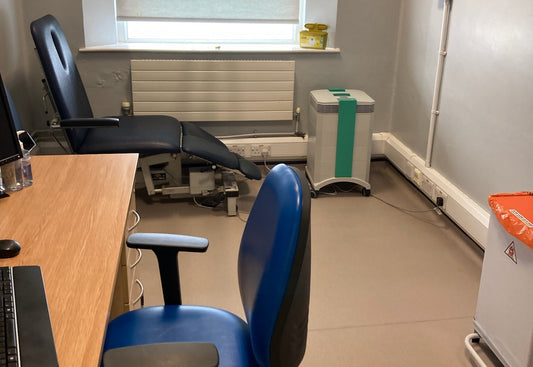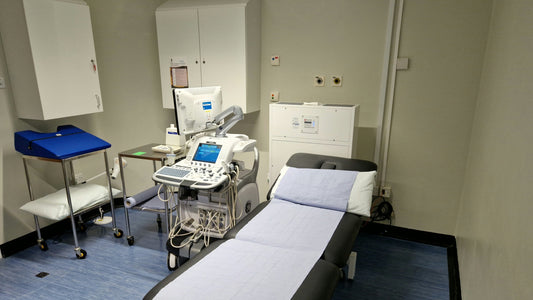Research has suggested that exposure to indoor allergens such as house dust mite in infancy is a strong risk factor for sensitisation and consequent development of asthma. Many young children spend a lot of time outside of their homes, in nurseries or pre-school, so allergen levels in nurseries are an important factor to consider. Later on, the children will be at school, so these outside environments may be the source of allergen sensitisation too. A now classic study on allergen levels in nurseries from researchers in France and Brazil makes for interesting reading and provides useful guidance on how to protect young children from developing allergies.
Day nurseries are more like homes than schools because they have mattresses (because the children are traditionally put down for a nap in the afternoon). In this study, the researchers looked at 30 nurseries in the city of Marseilles, France, measuring levels of house dust mite, cat, dog and cockroach allergens in various locations. They also questioned nursery owners about the cleaning habits in their premises ad about pet ownership.
Dust was collected in each nursery from:
- Mattresses
- Pillows
- Soft toys
- Floor
The researchers used antibody probes specific to each allergen to measure levels in the dust samples under laboratory conditions.
The characteristics of a building can affect allergen levels. All the nurseries in this study had smooth floors and the majority had central heating. There was no sign of mould in 83 per cent of the nurseries, of humidity in 73 per cent and of water infiltration in 67 per cent.
Most nurseries adhered to the following methods of allergen reduction:
- Use of synthetic mattress covers
- Sheets washed at least once weekly
- Floors cleaned daily
- Soft toys. washed monthly
- Synthetic mattress covers washed at least monthly
Allergen levels were as follows:
House dust mite
The proposed level for sensitisation is 2 micrograms per gram of dust. Levels were lower than this in 94 per cent of mattresses and soft toys and on 100 per cent of floors and pillows.
Cat
On floors, cat allergen levels ranged from less than 0.1 to 4.5 micrograms per gram of dust in mattresses and on floors from less than 0.1 to 2.4 micrograms per gram of dust. Only 10 per cent of pillows and soft toys had levels greater than 2 micrograms per gram of dust. Cat allergen levels were significantly higher in nurseries that had curtains and correlated with the percentage of children who had a cat at home (not surprising, for cat allergen is light and spreads very easily through the air and on clothing).
Cockroach
Thankfully, levels of cockroach allergen were very low throughout the nurseries (in a hotter country, they might have been higher).
Dog
Only three samples of mattresses had dog allergen levels higher than 2 micrograms per gram of dust.
The findings of this study suggest that levels of allergen tend to be relatively low in day nurseries. Only 6 per cent of day nurseries had levels of allergen greater than 2 micrograms per gram of dust. The lower levels are likely related to the presence of smooth floors, synthetic mattress covers and the frequent washing of sheets. Only three of the day nurseries had signs of mould, humidity and water infiltration – all factors that encourage house dust mite. Among these three, two had mite allergen levels higher than 2 micrograms per gram of dust, which is to be expected.
When it comes to cat allergen levels in nurseries, there is, unfortunately, no lower level for sensitisation defined. It has been suggested, however, that exposure to more than 10 micrograms per gram of dust of the main cat allergen Fel d 1 may be a risk factor for acute asthma attacks. Furthermore, exposure to more than 2 micrograms per gram of Fel d 1 has been suggested as a risk for sensitisation. Research has also shown that almost all patients who are allergic to cats will experience symptoms at 8 micrograms per gram of Fel d 1 which tends to be the minimal level found in a house with a cat in residence.
According to the above evidence, few of the nurseries in this study had sufficient levels of cat allergen to causes sensitisation. Levels of cockroach allergen levels in nurseries were also low though the researchers note that levels might have been higher had samples been taken from kitchens. Other work has shown levels of cockroach allergen 50 times higher in kitchens than in bedrooms. However, children are not usually allowed in nursery kitchens, so they are not exposed to these higher levels. Dog allergen levels in nurseries were also low and are similar to those in households without a dog. Other studies have reported much higher levels of dog allergen in schools in Sweden which may be because in day nurseries, floors are cleaned by wet sweeping at least once a day which is not necessarily so in a school.
The study suggests, therefore, that attendance at a day nursery is unlikely to sensitise most children to the allergens that have been discussed. Although the study was done a while ago, and also in another country, there is little reason to think that conditions in British nurseries in the 21st century are much different. The method of allergen avoidance – using allergy-friendly cleaning products and high-performance nursery air cleaning solutions play a key role in keeping levels low. These are some of the things that parents should look out for when choosing a nursery for their child. Unfortunately, the study did not consider other allergy and asthma factors such as particle pollution due to traffic as you would find it in most large cities or chemical pollution due to cleaning products and building materials.
To discuss how you can reduce allergen levels and help to protect children from becoming sensitised, please contact one of our experts at Commercial Air Filtration. Call us on 020 3176 0524, or email: Info@CommercialAirFiltration.co.uk.




